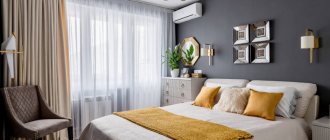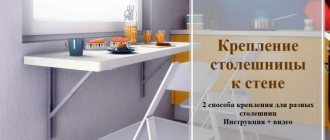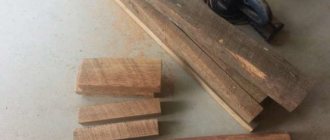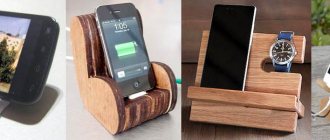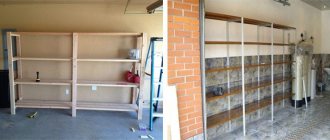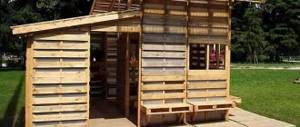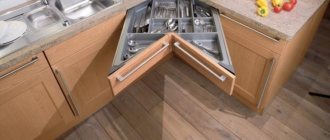Looking for an original way to decorate your home? Take a closer look at the interiors in your favorite foreign films. In large houses, the walls of the living room are usually decorated with plates with unusual designs. This design technique has long migrated to us. Now it has become fashionable to decorate the walls of your office, bedroom, nursery or living room this way. In this article you will read useful tips on how to hang a plate on the wall. You'll be surprised how many ways there are to do this. We will also talk about the rules for placing decor and patterns for placing saucers.
So, let's figure out how to hang a plate on the wall. Mounting is the first thing to consider.
Method number 1: without nails
If you are looking for a way to hang a plate on the wall without drilling, then this tip is for you.
Take a plate and glue a small piece of wood to it. Wait until everything is dry. Now, using this piece of wood and liquid nails or cold welding, glue the plate to the wall.
This base is needed to increase grip. The fact is that the smooth surface of the plate will not stick to the wall. Porous wood is an excellent helper in solving the problem. In addition, it is rare that any plate has a flat surface on the back. Now you know how to hang a plate on the wall without nails.
LiveInternetLiveInternet
Good afternoon, today we will talk ABOUT PLATES - as interior decoration.I will tell you -
- about how you can transform a room with wall and regular plates.
- about the ways in which they can be attached to the wall (6 ways)
I will also show many, many different photographs with excellent “plate ideas”.
So let's get started.
Plates on the walls can transform any room, making it cozy and harmonious. It is thanks to the elegant scattering of colored plates that many multi-colored decorative elements can be combined in the interior.
Blue pillows + red floor lamp + beige curtains - all these incompatible color details suddenly one day begin to wonderfully harmonize with each other only because a red-blue-beige family of plates appeared on the wall.
The plates can be attached to the wall in any way you like. For example, a free chaotic “flock”.
Plates can be placed on the wall in orderly rows.
Or in accordance with mirror symmetry - when the right side reflects the left.
HOW TO SELECT WALL PLATES TO YOUR INTERIOR.
Here are 2 options for selecting plates for the design:
- The plates will be the same color as the entire interior === beige room - then the plates will be in shades of ivory.
- Choose plates of CONTRASTING COLORS ==== beige room - so what, let the plates be bright red.
For example….
your interior does not stand out in any way, it is made in calm brown-beige or pistachio-white tones, and you would like to “stir up and decorate” it.
You can do this...
buy curtains, pillows, plates in one new color scheme and add this new color to the room (pillows on the sofa, curtains on the window, plates on the wall).
The interior is instantly transformed , and there is a feeling that the skillful hand of a designer has worked here. What a surprise your guests will be when they find out that you yourself have modified your apartment in this way and for very little money.
WHITE PLATES ARE LIKE SPACE FOR CREATIVITY.
And another CLEAR IDEA is to buy white plates and paint them in the colors that go with the room.
Let's say...
... in your bright interior the MAIN SPOTS OF COLOR are the blue floor lamp and the pink pillow given by Aunt Klava.
These are the color accents that we will use as a starting point.
First, let's practice on paper (to immediately check several options and guess the color): take a sheet of paper, cut white circles out of it and begin to decorate them as you please, in blue and pink colors - these can be blots or stripes or flowers.
When the composition on paper circles satisfies us with its artistic performance, we can transfer this idea to real plates.
You can use regular acrylic paints (sold in the stationery department of any large store).
If you don’t feel ARTISTIC COURAGE, you can do it simpler.
We take masking tape (the one you use to cover windows) and simply stick it on the plate in strips, leaving a distance of 1-2 cm between them.
And these unpasted areas can be painted over with one color. When the paint dries, you can carefully remove the tape from the plate - this way we will get perfectly even stripes. These are the ones in the photo with orange flowers.
DRAWING ON PLATES can be more complicated.
To do this you will need regular acrylic paints or special paints for working on glass.
Moreover, your drawing can be depicted entirely on ONE plate or occupy SEVERAL plates at once.
HOW TO ATTACH A PLATE TO THE WALL.
Here I have collected SEVERAL WAYS to mount plates on the wall...
The plates with which we would like to decorate our wall do not always have special devices on the bottom for attaching them to the wall.
Therefore, we have to come up with other ways to attach plates to the wall
A very good way out of the situation is to buy good glue and use it to glue a string loop to the plate. It is better to give preference to epoxy glue - it is sold in two parts (powder and liquid), when combining these parts you get a mixture similar to liquid amber resin - you can make a regular loop of twine and glue it to the back of the plate with this epoxy resin. Unlike ordinary super-glue, this composition will firmly glue the string to the plate and you will not need to worry about how one day the elegant plate will fall on the head of your dear guest.
Or here are other ways to attach plates to the wall.
ATTACHING THE PULLEYS TO THE WALL WITH ROPE.
For this you need either these plates with a holey openwork edge,
Or - in each plate you need to carefully drill a hole with a regular drill with a special drill for drilling holes on the tile (so that the plate does not crack during the drilling process).
CLAMPED PLATES.
You can buy or make your own metal clamps for plates . On the back of the clamps there is a special loop for attaching the entire structure to the wall.
If you can’t find such staples on sale , you can make a homemade analogue .
To do this we need twine or an elastic band + 3-5 paper clips.
This design is very quickly created and firmly attached to the plates, and then to the wall, where the nail holders are already filled.
These methods are shown in the picture:
FORGED PLATE MOUNTINGS.
Such fasteners need to be matched to the color of the plate. Typically, such structures are mounted along the doorway, on both sides of the mirror or window . As you can see, even a Halloween party can be decorated with plates.
RACKS WITH NARROW RIBBED SHELVES FOR PLATES.
Or you can build a rack with narrow shelves , especially for plates.
The surface of each such shelf should:
- or have ribbed cuts
- or glued thin slats (something like rails).
Thanks to such a surface, each plate fits into such a groove (or into the gap between the “rails”) with its edge and is not in danger of falling off the shelf.
RACKS WITH PADS (to prevent plates from sliding off the shelves)
These racks also have narrow shelves , but the plates are not supported by the facets; they are prevented from falling by slats packed transversely in the center of each bay.
This solution is suitable when the height of the shelves is small - that is, the height of the plate does not fit on the shelf.
This is also the case when you want to place MORE ROWS of plates on a small rack.
PLATE FRAMES ON THE WALL.
Such square frames can be ordered from a framing workshop or made yourself from small beams painted white. We cover the back side of the frames with cardboard or plywood, wrapped with colored wallpaper to match the tone of our interior. (or you can buy different-patterned gift paper in the gift design department).
How to secure the plates inside such frames?
Here is one way: We punch a hole in cardboard (or plywood). The plate also has a hole on the back side. We take a stronger wire - we thread it into the hole on the plate - we twist the ends of the wire together - we thread both ends into the hole on the cardboard (plywood) - and we spread the ends of the wire apart (into a hole) so that they will not come back out of the hole (for this the wire must be tough enough).
The second method is similar: but instead of wire we take strong twine. We thread the twine into the hole on the plate - tie the ends into a knot - pass both ends into the hole made on the back wall of the frame - and from the same ends of the twine we make a loop on which we hang the entire frame and track structure.
And you can also use good glue - for example, the favorite of all designers, “Liquid Nails” - sold in any hardware store (inexpensive).
WALL PANELS WITH PLATES.
In one German town there lives a good guy... with a very nice business.
And just look at the beauty this local craftsman makes with his own hands.
If you take a closer look, it becomes clear that such a panel can be easily made from ordinary materials, glue and good artistic taste. Read more about panels made in this style in our special article on the website Semeynaya-kuchka.ru “Family bunch”
WHAT CAN YOU REPLACE the banal plates on the walls?
BOX LIDS ON THE WALL. You can buy several low round boxes - from each such box you will get two “pseudo-plates” - one from the lid and the other from the bottom of the box.
Each detail can be covered with remnants of colored wallpaper , self-adhesive film, or simply painted with spray paint.
a photograph or elements of kitchen utensils in the center of each cardboard plate , you will get an original design composition on your wall.
TIN TRAYS ON THE WALL. Instead of plates, vintage trays can just as successfully be displayed on the wall.
You can buy them in regular stores, at flea markets, or bring them back from travel.
A collection of trays can be assembled very quickly if you notify all your friends that in the near future the best gift for you will be a tin tray from the time of our grandmothers.
convenient to attach to such a tray .
SOFT PLATES FOR THE WALL OF A CHILDREN'S ROOM. It is quite natural that where children jump and have fun (in a children's room or in a living room on the sofa) it is undesirable to decorate the walls with heavy and hard dishes. There are options for such cases.
Option one - take ordinary round wooden frames or round wire rims. An ordinary wooden embroidery hoop will do an excellent job of this role (you can buy them in the same department where buttons and other sewing accessories are sold). We wrap the frames in elegant fabric with a pattern and get a wonderful soft plate.
Option two - we buy foam plastic patterned circles at a hardware store (such circles are used to decorate the ceiling at the place where the chandelier is attached to it). Using spray paint or a brush, we paint these ceiling decorations in the colors we need and attach them to the wall.
By the way, it will be very cheap and beautiful if you cast such circles from plaster ... you think it’s difficult... in a special article I will tell you how, using old plastic cake lids and gypsum powder, you can make such round relief plates.
And if you know another way to fix a plate on the wall, write about it in the comments, and I will definitely tell you about it in this article.
I think this is not our last article about plates, stay with us - we will have a lot of interesting things.
Olga Klishevskaya, especially for the website “Family Kuchka” / Semeynaya - kuchka . ru
Electrical tape or adhesive tape
Light decor can be fixed with the help of things that are found in almost every home. We will need white electrical tape and adhesive tape. Place a long piece of tape vertically on a plate. Now secure it again on the plate with horizontal strips. Insert the holder into the end of the electrical tape and seal it. Cover the end again with several horizontal strips of duct tape. This is a fairly reliable method of fastening.
Paperclip, wire and hairpin
For fastening it is very convenient to use the eyelet from tin cans. If you don’t have one in the house, then a wire, hairpin or paper clip will do.
In your work, you can use a gun with hot glue (silicone rods). The back surface must be degreased. For better adhesion of the surfaces, you can walk a little along the back wall of the plate with sandpaper. But this is optional. The fact is that if you scratch the surface a little, the materials will stick together better and there is less chance that your plate will fall and break.
Ready-made wall holder
If you don’t like to tinker with yourself and hand-made is not your thing, then look for special plate holders in decorating stores. They will definitely tell you how to hang a decorative plate on the wall. As an option, a stand mount is suitable for you. Just fix it to the wall and insert a decorative element into it.
Factory holders are divided into two types:
- steel with spring;
- round sticker with a loop.
How to determine what type of purchased mount you need? Focus on the weight of the plate. If it is heavy and large, then you need a metal mount. If it’s small, you can get by with a neat sticker.
Interview with a collector of decorative plates, which are collected according to geographical principles
Collecting plates from different countries is similar to collecting mugs or refrigerator magnets, Alexander says. He bought his first plate in the Federal Republic of Germany (FRG) during the Soviet era. Today, at the Mukhomor store, he and his wife Olga bought a Kenyan plate made of natural stone.
Sometimes it seems that the sense of beauty is being emasculated. Everything happens very quickly. People exchange phones, cars, sell apartments with furniture. How to see what you like? What is the value of collecting? How to see it depends on the person himself.
We have plates hanging in our kitchen, I look at them and remember my travels. It's nice. Every collector is a little crazy. As a child, I collected stamps, then model cars, and then I started collecting decorative plates. They take up a little space and are beautiful. I sit at home, I'm retired, and I get bored. I used to walk and sweep near the garage and clear the snow. This is useful - after all, people walk there, and at the same time exercise. Now it’s a bit of a walk to the garage, and I need to do something. I made a catalog of plates and counted them at the same time. My collecting is directly related to geography. I always knew her well, but it turned out that things work out in an interesting way with countries in the world. For example, the Isle of Man is an offshore zone, but it has no less rights than another country. Yes, he has no army, no foreign policy, but he has his own governor-general and the Queen of England, whom they have never seen. And many probably don’t even know that it even exists. And Isle of Man plates are also available, if we talk about my topic.
There is a country called the "Order of Malta" - I'm sure few people have heard of it. The order has no land, but is represented in the UN. The Order of Malta is a castle in France, some real estate in Rome and Malta. And a plate with the words “Order of Malta” written on it, which I came across by chance. Wow!
At first I thought - what order? What it is? I looked it up on Wikipedia and read about it. And now I have a plate of both Malta and the Order of Malta. According to my calculations and from the point of view of my interest, there are 251 countries in the world. These are unrecognized or semi-recognized states such as Transnistria or Karabakh. These are also semi-dependent countries, such as the Faroe Islands, which belong to Denmark. These are the Åland Islands, which are an autonomous region of Finland. Such entities are not represented at the UN, as they are semi-independent. But for me they are interesting, and I repeat, there are 251 such countries. My collection represents 140 countries. There's just a little bit left, as my wife says. It turns out that collecting is food for the mind?
Yes, sure. If I hear about some country that is new to me, I will go and read about who inhabits it, what language they speak there, what its history is, its capital, how it was settled. Here, for example, is a unique story. My nephew was in Vietnam, and I asked him to bring a plate. He reacted responsibly: he knows that I don’t like very convex and thick ones that stick out too far from the wall. So, he found a plate that turned out to be made in North Vietnam, a state that existed before 1976. As a result of the war, North Vietnam defeated the United States and its proxies, and the unification of North and South took place, which is modern Vietnam. Today there is no North Vietnam, but I have a plate. And such stories are interesting to me: after all, for example, Yugoslavia, Czechoslovakia, the GDR, the Federal Republic of Germany, the USSR no longer exist... But still, what is the value of the plates?
The main value for me is the local flavor, which is reflected in the plate. It is also important that the plate says where it was made. In Holland, for example, mills are depicted on plates. They are blue, like Gzhel. Uruguay's plates depict bulls and cows. The plate itself, with a diameter of 16 cm, is made of tanned leather, and in the middle there is an aluminum coin. And on this coin, in bright colors, a typographical map of Uruguay is depicted with the names of the provinces and the capital. They sent me a plate from New Zealand: natural stones and coins were somehow poured into it. Very beautiful. The Albania plate is made from a thin sheet of copper on which an image is chemically etched.
Lebanon makes similar plates. Well, the Argentine plate depicts tango dancers. In Brussels, you go to a newsstand and it sells 200 plates, and your eyes widen. Plates of different diameters, different subjects - beauty. But, of course, they mostly take plates with a boy peeing. Animals on your Kenyan plate.
Decorative wall plates from Kenya. Made from natural stone
Buy decorative plates from Kenya in the Fly Agaric store in the “Stone Africa” section
There is nothing written on it. But maybe the person who made it doesn’t know how to write. I have a plate from Peru with a beautiful tiny ornament, also without any inscriptions. This is your collecting focus...
Yes, however, many plates are made in China. The Germans do it themselves, and Andorra does it in China. Canadian plates are very beautiful, Bahamas plates are beautiful, they are also not made in China. Do you keep in touch with other collectors?
I don't know of a place where collectors gather. There are not many meetings, they happen when you buy or sell something through Avito. But everything is simple there: we meet near the metro, he bought a plate from me, or I bought it from him. And they parted ways. Interviewed by Afroart store manager Konstantin Ilyushchenko
Mounting plates on the wall
If you are going to attach a group of decorative items, then first you need to draw the layout - how you see the placement of the plates. Now place each product on paper and trace. Cut out each "pattern". Take a sheet of Whatman paper and tape the paper plates to it.
Use your imagination in the process, you will definitely find your own original drawing. It may look like a waterfall or a rainbow. Or perhaps you gravitate towards strict geometry? You can draw the sheet into even squares or diamonds. Now you have a good idea of how your plates should look on the wall. Never rush to attach decor without thinking through the composition. After all, any method can leave a mark on the surface that will be difficult to disguise.
Now remove the paper plate models from the wall and, looking at the “cheat sheet” on whatman paper, attach the sketches to the surface of the wall. It is best to attach it to the wall with masking tape. It is made of paper and will not leave marks on the wallpaper.
Now outline the blanks with chalk or a disappearing marker. Below you can look at several ready-made layouts. Perhaps they will help you create your own version and you will immediately understand how to hang the plates best.
You can also play with some beautiful and massive object, for example, a mirror in a beautiful frame that hangs on the wall. Plates placed above a fireplace or an antique chest of drawers look great. The plates look beautiful above the bed. In the corridor they can decorate the space around the doorway.
Five basic rules for wall decor using plates
The tips listed below will help you create with your own hands an original composition from any plates (gift, decorative, etc.), which will become a “highlight” in your interior.
Match the plates with the style of the room. For a classic style, porcelain with floral patterns in white and blue colors or gold plated are suitable. For a modern style, bright and colorful patterns are used. And in country style, white or cream ceramic dishes will look ideal.
When choosing a color scheme for a wall composition, make sure that it is combined with other details in the interior, for example, with the color of floor tiles, furniture or textiles. You can hang plates with any designs on a plain background.
Apply the principle of contrast when creating a wall composition. Light decorative saucers will go well with dark walls, and vice versa.
When composing a composition of plates, follow the main rule: they must be combined with each other in at least one way, for example: shape, color, pattern or theme.
Combine a collage of dishes with other decorative elements; for example, they will look very nice next to vases or wall sconces (see photo).
Advice!
Don’t be afraid to experiment with the size and color of decorative plates: combine plain ones with multi-colored ones, and large ones with small and medium ones.
Decorative plates in eco-style
How to hang plates on the wall in the kitchen?
It all depends on the style of your kitchen and the available wall space. You can arrange the plates any way you like. There are no specific rules here.
But what plates to hang will depend on the style of the room.
- If the kitchen is decorated in ethnic style, then copper trays, as well as dishes painted in folk style (Gzhel, Khokhloma, Indian motifs) will look very organic on the walls.
- A country-style dining room will sparkle with new colors if you decorate the walls with wicker dishes. Bright plates with floral patterns are also suitable here. The more saturated the colors on them, the better.
- In a large kitchen, which is decorated in a classic style, white, grayish, and milk plates would be appropriate on the walls. It is desirable that they be of different sizes and shapes. Make sure that the group of saucers has something in common. The plates, the edges of which resemble knitted napkins, look beautiful.
How to make frames for plates on the wall
Square frames for products can be ordered from a special framing workshop or made yourself from small beams that are painted white. The reverse side of the frames is sealed with cardboard or plywood, wrapped in colored wallpaper that matches the tone of the selected interior.
Tip: Multi-patterned gift paper used for decorating gifts is well suited for decoration.
There are several ways to attach plates in such frames:
- A hole is made in plywood or cardboard. There is also a hole on the back of the plate. Then:
- take a strong wire and thread it through the hole on the plate;
- the ends of the wire are twisted;
- both ends are threaded into a hole on plywood or cardboard;
- The ends of the wire are spread apart so that they do not come back out of the hole.
- It differs from the first one in that a strong rope is used instead of wire. For this:
- the rope is threaded into the hole placed on the plate;
- the ends are tied in a knot;
- both ends are passed into a hole made on the back wall of the frame;
- A loop is made from the ends of the rope to hang the entire frame plate structure.
- Using a good glue such as liquid nails.
What mounting methods can be used when decorating a room, how to hang a plate without mounting it on the wall, which design is better to choose and all other issues are well covered in the video in this article.
Hello, dear readers! Many of us are accustomed to decorating our walls with paintings, photo frames, mirrors, etc., but what if we use plates on the wall as decorations? This technique will instantly enliven your interior design, emphasizing its main features and creating an emphasis on such an unusual decoration! After all, with the right selection of colors, patterns or images, decorative plates on the wall will become a logical continuation of the decor of the room. But sometimes choosing a color is not enough; it is important to correctly position the entire plate composition.
But first, let’s look at the rules for working with the color scheme of plates. In fact, decorative plates look most advantageous on the simplest, monochromatic walls (so that the diversity of the plates does not merge with the multi-colored walls). It's simple: dark or colored plates go perfectly with light walls, light products are wonderfully perceived against the background of dark walls.
Now let's talk about composing the plates. The most important rule is overall harmony, i.e. the entire cymbal group should look symmetrical and not stand out from the general row. You can experiment with the sizes and shapes of the plates, but remember that the composition should look symmetrical! Decorative wall plates can be arranged in rows, in a cross, to create round compositions, oval, square, stars, rectangular, and also to imitate waves.
Children's decor
There is no limit to imagination here. There are a great variety of products with children's themes, but let the owner of the room tell you how to arrange them correctly.
Advice. Buy white decorative dishes and paints (acrylic or special for ceramics). Let the child paint them on his own, and you help him with this. No one else will have such an original nursery design! You can hang a palette of paints next to the plates. Set up an easel nearby. Think through the details so that everything looks organic in the young artist’s room.
Decorative plates for the wall: 120+ bright and memorable photo ideas for a cozy interior
The symmetrical arrangement of plates on the wall will perfectly complement and enliven the interior of both a classic and modern living room.
Harmoniously selected plates on the wall will look stylish and fashionable in any interior. This is a great alternative way to decorate a room. Nowadays, this decor option is still relevant and is actively used by designers when creating luxurious luxury interiors. At the same time, it is not at all necessary to purchase decorative or souvenir plates - you can create a beautiful composition from ordinary dishes you have. For example, gift plates with views of cities brought from different countries will not only decorate the wall, but will always remind you of a wonderful vacation and happy moments in life.
Don't be afraid to experiment! The more interesting the shape of the edge of the plate, the better.
Plates with prints or photographs are a great alternative to paintings on the wall
Composition
Still haven't decided how to hang the plate on the wall? Let's remember the basic laws of composition.
- If the walls are plain, then the decor can be of any color: strict light and flashy shades. Naturally, it needs to be in harmony with the colors in the interior.
- The darker the surface on which you want to hang the saucer, the brighter the decorative element should be. Otherwise, he will simply get lost against this background.
- Monochrome design never goes out of style. White walls and black plates and vice versa - it's stylish!
- Is there wallpaper with a pattern on the walls? The task becomes more difficult. You will have to select plates that will look harmonious with their decoration.
Daminova Flora's Workshop
We are used to decorating walls with paintings, photographs or hanging shelves with decorative items. I want to offer an alternative option that will allow you not only to decorate an empty wall, but also to bring a piece of soul and real exclusivity into the interior.
As you already understood from the title of the article, we are talking about decorating walls with decorative plates. Hanging hand-painted plates on the walls is a wonderful and easy way to refresh (enliven) a space that won’t take much time or effort! And most importantly, it provides simply limitless opportunities for the implementation of creative ideas, both for the author of the plate painting and for the owners of the house.
To create original wall panels, I create special thematic collections of decorative plates of different shapes and sizes, which introduces an additional element of play into the interior design.
Decorative wall plates, “Cheese plates”
You can make home improvement a fun process. Imagine yourself as an artist! Decorative wall plates can be beautifully placed on a shelf or niche in the wall, arranged in rows on the shelves of a buffet or rack, or they can be fixed directly to the wall itself using screws and holes.
Plates for the wall, “Family nest”
The plates can be swapped from time to time, building new compositions, combining sizes and colors. It all depends on your imagination.
Plates for the wall, “Flora”
Lay out wall plates in simple rows or in specific patterns. Experiment to your delight and the surprise of your guests. The beauty and unusualness of details always makes a strong impression.
Plates on the wall, “Provence”
Collection themes
I come up with collections myself. Each topic is the result of my personal impressions. These are fantasies embodied in a drawing. The impetus for creation is travel, acquaintance with different cultures and eras.
Plates on the wall, “Still lifes of Garzonni”
Collection of plates “Still lifes of Garzonni”
And I can’t wait to share my discoveries and the feeling of happiness from the creative process with the world. even try to interpret traditional scenes for painting dishes in different ways.
Plates for the wall, “Country Stories”
Painting is the main passion of my life; I put a piece of my soul into every work..
In general, the themes of collections can be very different - flora, fauna, scenes from life, urban, rural, nature, ethnic motifs, stylizations.
Plates on the wall, “Butterflies”
Plates on the wall, “Butterflies on the wall”
Plates for the wall, “Garden”
A collection of decorative plates can be bright, emotional, or calm, classic.
Plates for the wall, “Delicate flowers”
Collection of plates “Kittens”
Collection of plates “Lesnaya Zaimka”
Of particular interest and excitement is coming up with a theme for a specific interior – its style, mood. For example, one of the recent works is a collection for a fish restaurant in Sevastopol, into the atmosphere of which I wanted to bring lightness and home comfort. The customers specifically asked me to sign each plate with a picture of fish so that restaurant visitors would recognize the local fauna by sight.
Plates on the wall, “Fishes of the Black Sea”
Or, for example, painting plates to match the customer’s interior, specifically to match the design of the curtains...
Collection of plates “Chinoiserie Roses”
Where can you hang decorative plates on the wall ? Of course, we strongly associate tableware with the interior of the kitchen ( plates for the kitchen ), kitchen-dining room, where gastronomic and country motifs are popular. These themes are very widely represented in my work.
Plates on the wall, “Cabbage”
Plates on the wall, “Country”
Plates on the wall, “Streets of Provence”
Collection of plates “Juicy Fruits”
Plates on the wall, “Pumpkins”
However, decorative plates are appropriate not only for the kitchen; they can decorate walls in almost any room, for example, in the bedroom, where the composition can become a “logical continuation” of the designer headboard, as well as in the living room or hall (hallway), where decorative plates occupy the space above console or cabinet.
In the kitchen, painting in country style, vintage, and scenes from rural life are most in demand. At the same time, I really like to paint not only plates, but also tiles on kitchen aprons united by one theme.
Many of my collections are dedicated to botanical themes.
Painting plates “Orchids”
In any case, hand-painted plates ( hand-painted plates ) are very expressive interior items, which carry the special energy of a work created by the warmth of human hands and can add comfort to any interior.
I hope many people will like traditional ethnic ornaments.
Painting plates with the Talaverra clock
Painting of Talavera plates
And of course for children!!!
Wall plates “Birds of the seasons”
Plates for the wall “Young Captain”
And these are the plates of my daughter Renata Zinatullina (RenataGlaze) , she, like me, prefers thematic collections.
Collection of plates "Circus"
Collection of plates “Botanical engravings”
Collection of plates “Forest animals”
Collection of plates “Easter bunnies”

